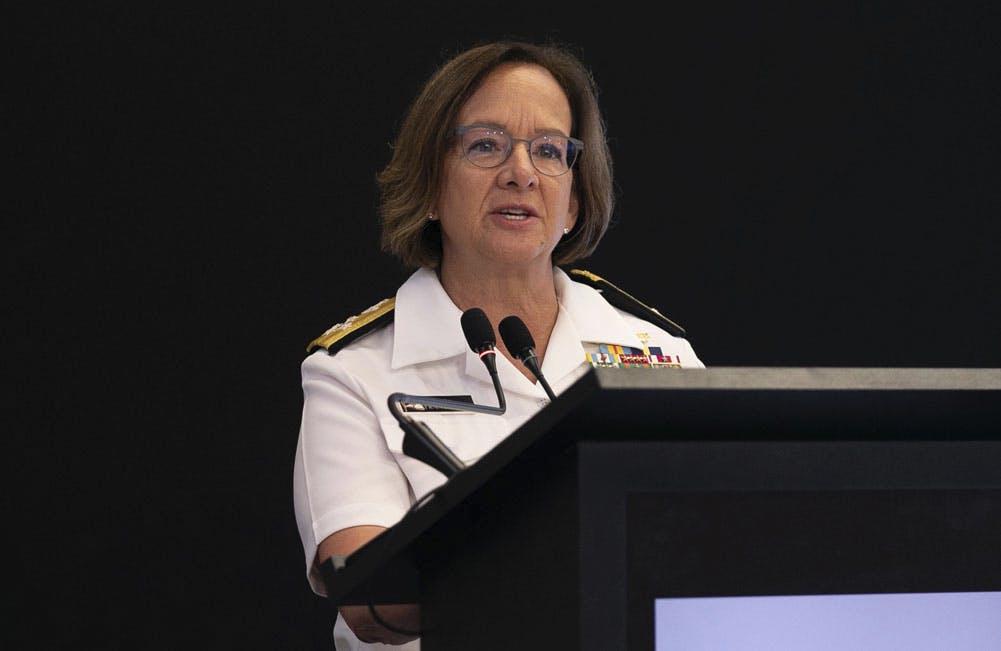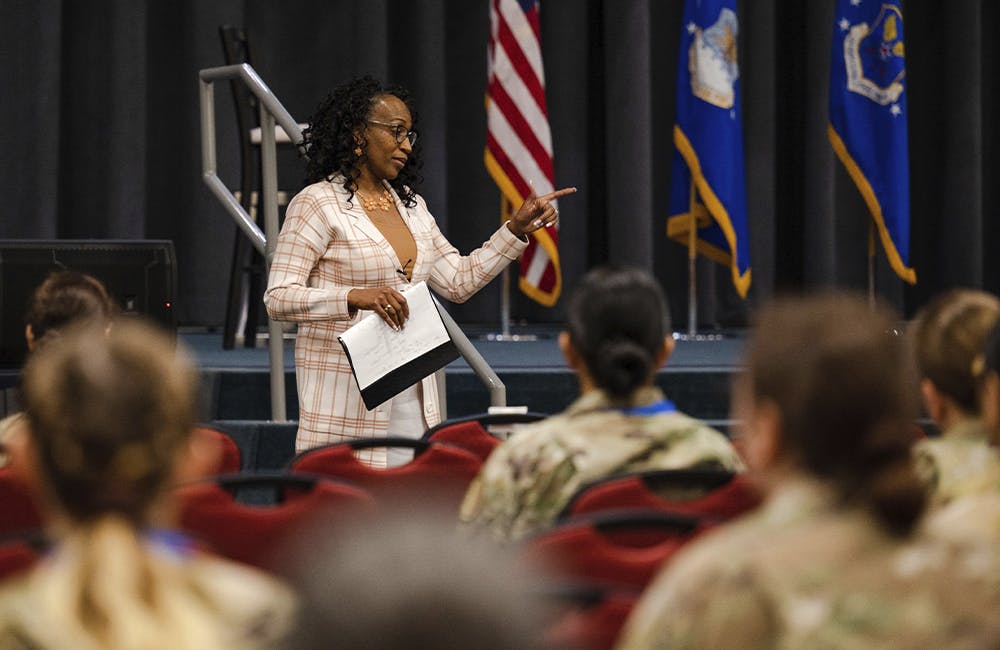Navy Chief Points to More Autonomous Systems, Robotics by 2027
Adm. Lisa Franchetti’s new plan prioritizes development of autonomous systems to prepare the Navy for growing aggression from China.

The Navy’s top officer sees growing use of autonomous and robotic systems as key parts of her navigation plan to prepare the service for adversarial threats from China over the next two years.
“There are things you can do in robotic and autonomous systems to be able to expand on the lethality and the depth of our conventional platforms,” said Chief of Naval Operations Adm. Lisa Franchetti at a Defense Writers Group meeting Wednesday.
The comments come amid Franchetti’s new navigation plan that sets strategic guidance for the Navy to outpace China. Outlined in that plan is a goal to operationalize robotic and autonomous systems, one of seven priority areas she calls “Project 33.”
“It’s pretty clear that, based on what [China President Xi Jinping] has said, his military forces need to be ready by 2027 for war,” she said. “My objective in the navigation plan is to make sure that we are, going forward, fully able to integrate the man-unmanned teaming concepts through these platforms, whether it’s under the sea, on the sea or above the sea.”
Franchetti during her tenure has consistently emphasized technology’s role in her priorities to counter threats from China as it grows its military force. Earlier this year, she noted that the size of the force alone is not an end point.
“It’s not about numbers. It’s about how you put it all together. It’s platforms on, under and above the sea,” she said in February. “It’s the networks that enable them. It’s cyber. It’s our work in space. It’s work with all the joint force. They are incredible force multipliers.”
Technology Advancements for the Joint Force
The Navy’s contribution to the joint warfighting effort is a key component of Franchetti’s navigation plan.
“When I talk about the joint warfighting ecosystem, just from a global perspective, the idea is that we have a ‘system of systems’ conversation,” said Franchetti. “You have a warfighting ecosystem enabled by the information warfare domain, space and cyber.”
The Navy is learning from activity around the world in accordance with Project 33’s goals, she said.
“We can analyze the engagements that we’re seeing in the Red Sea, and we can take the data that our weapon systems are seeing,” said Franchetti. “We can take that back here in the U.S., and we can let our engineers work with our people that develop tactics and procedures and work with industry to look at what is the adversary doing.”
“I talked a lot about in the nav plan, about the changing character of war,” she added. “Ukraine has shown us that you can innovate on the battlefield. I want to innovate before the battlefield.”
The Navy collaborates with other Defense Department components and industry partners on development of unmanned systems, Franchetti said. The service created the Disruptive Capabilities Office in 2023 to support the Pentagon’s Replicator plan, which is looking to maximize existing unmanned weapons, systems and vehicles across the department.
“We stood up our Disruptive Capabilities Office … to take and find technology that’s already out there and ripe and ready to go and ready to be integrated,” said Franchetti. “What we really want to do is understand what the fleets need and then we can help get after those capabilities more effectively. “
This is a carousel with manually rotating slides. Use Next and Previous buttons to navigate or jump to a slide with the slide dots
-

Trump's HHS Secretary Pick Eyes Transparency, Data Access
Nominee Robert Kennedy wants to improve transparency and data access to empower patients and enable innovation in health care technology.
4m read -

Federal Leaders Revamp Tech Workforce, Policy
Despite the rise in interest of emerging technology, federal leaders see data, policy and the workforce as a best vehicle for change.
4m read -

Looking Back at the First Trump Administration's Tech Priorities
In his first term, Donald Trump supported cybersecurity, space policy and artificial intelligence development.
4m read -

Labor CAIO Outlines Responsible and Ethical AI Priorities, Use Cases
Department of Labor Chief AI Officer Mangala Kuppa outlined how her role is shaping the agency’s artificial intelligence strategy.
20m watch








